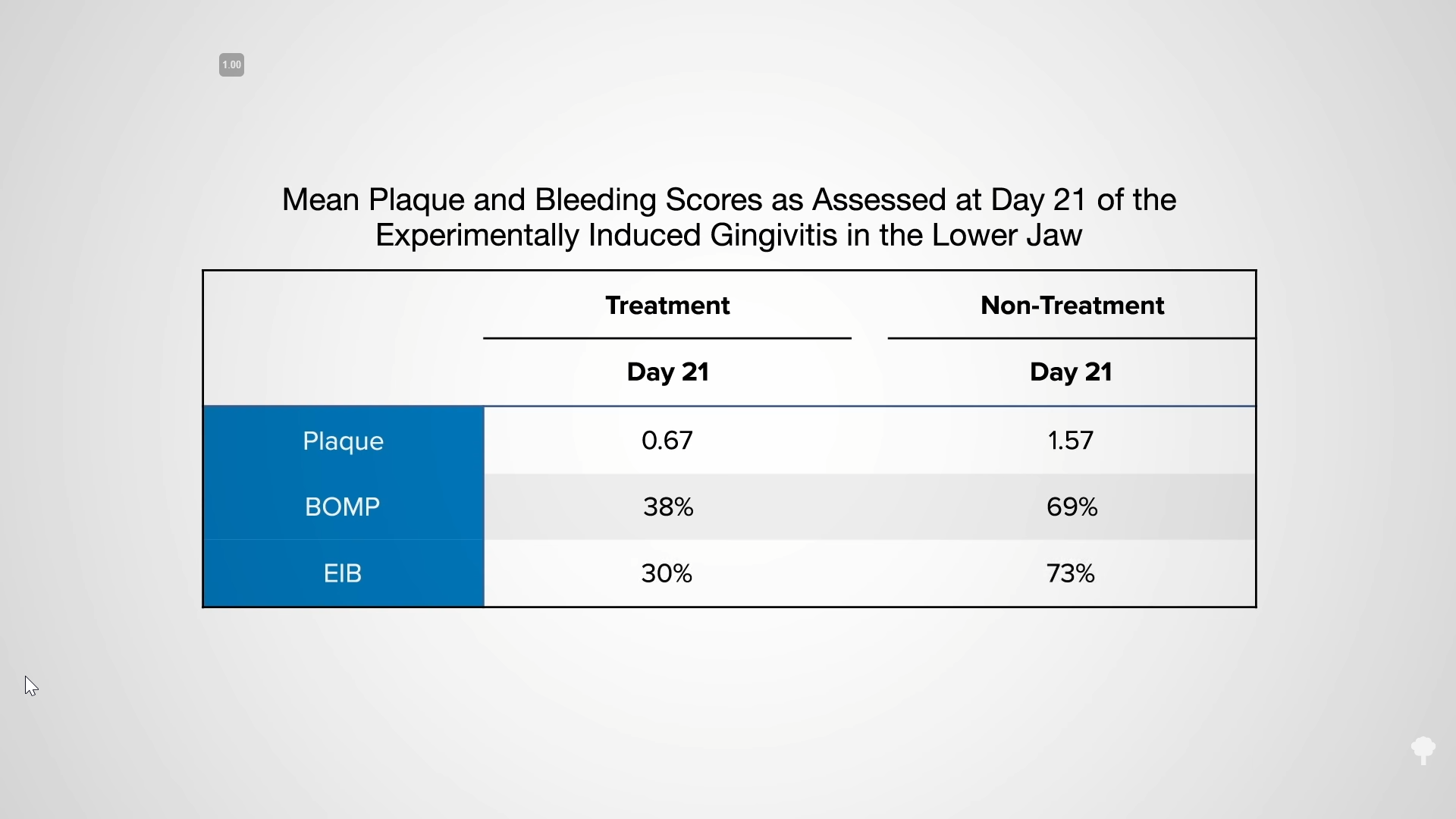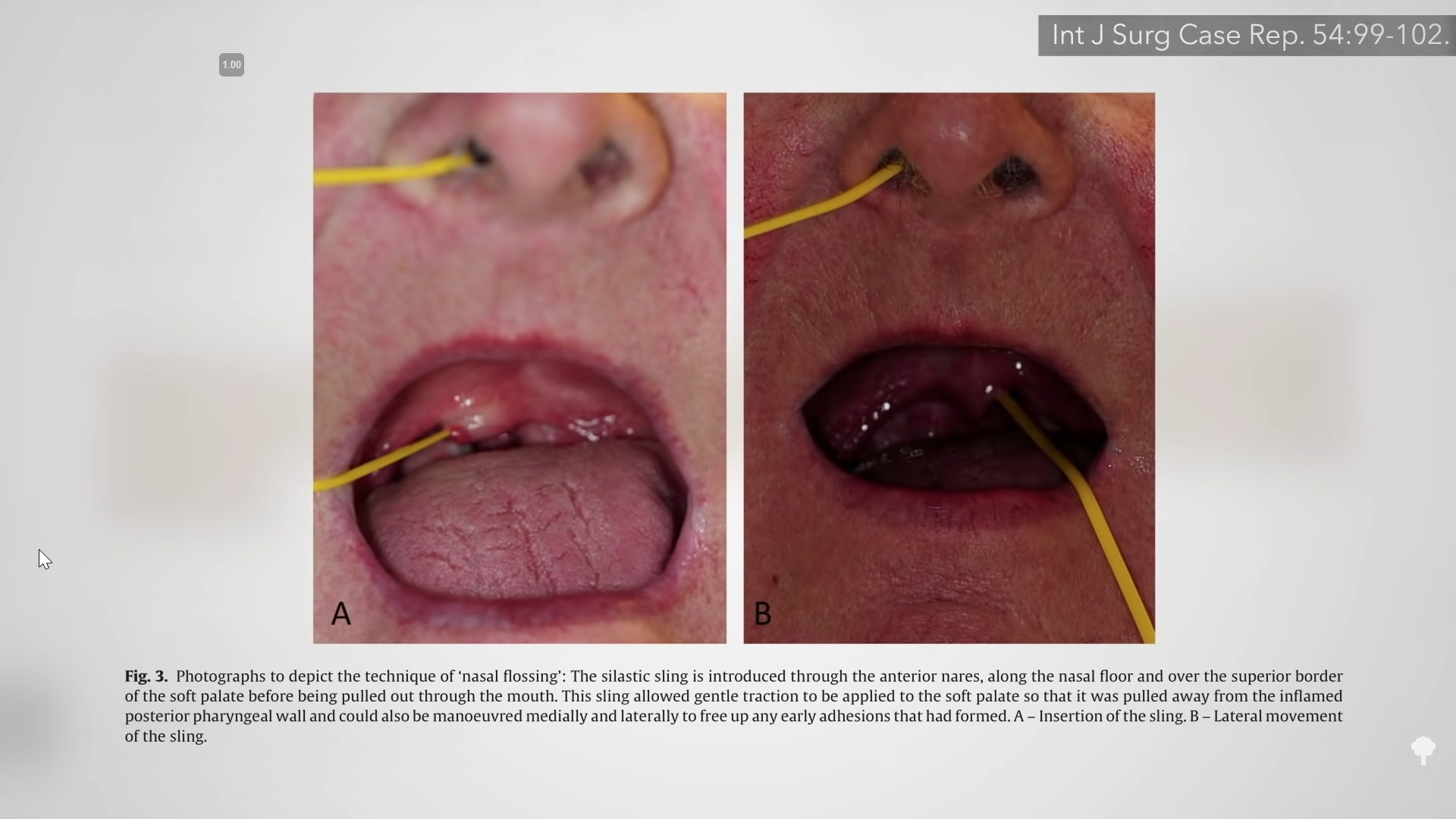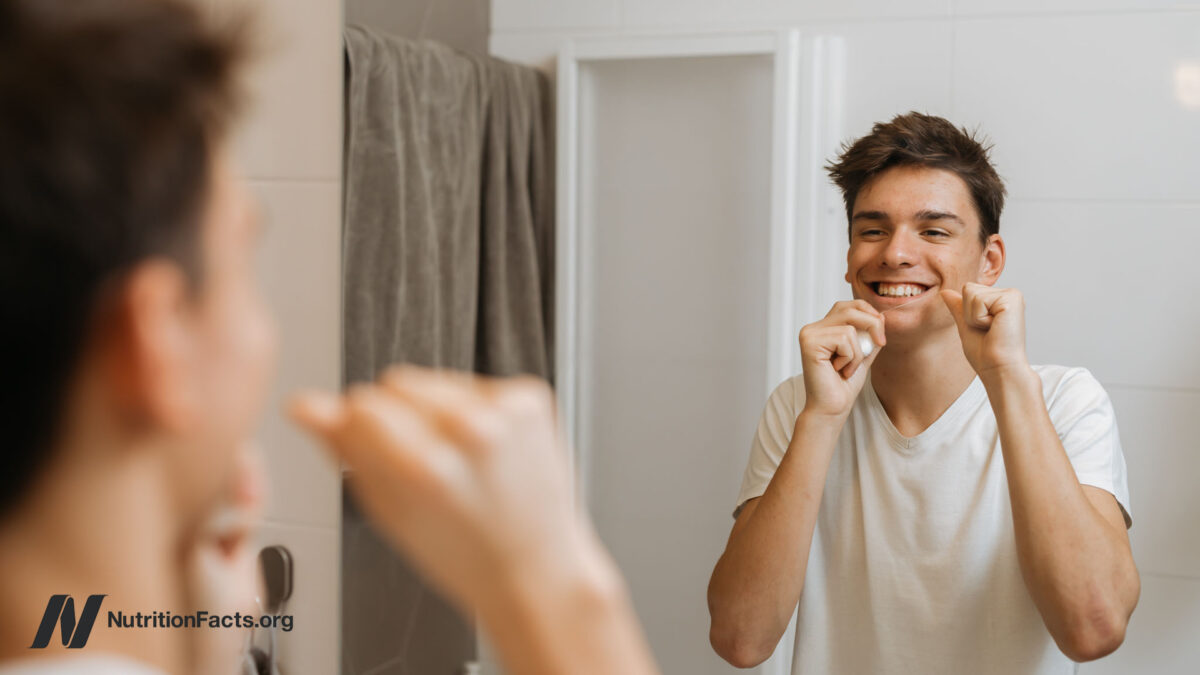How good is the evidence that flossing is effective? According to randomized controlled trials, what is the optimal toothbrushing and flossing sequence?
“Over the years, it has been generally accepted that the use of dental floss has a positive effect on removing plaque. The American Dental Association (ADA) even reports that up to 80% of plaque may be removed by this method.” How do we know? You can use what’s called a split-mouth design, where each person can act as their own control—for example, by flossing only one-quarter of their mouth. Researchers asked study participants to stop brushing their lower jaw so that plaque would build up, then they were randomized to floss half and leave the other half as the non-flossed control. As you can see below and at 0:37 in my video Should You Floss Before or After You Brush?, not only did flossing cut plaque by about 60 percent after just three weeks, more importantly, it also halved gingivitis signs—bleeding on probing and another index of gum inflammation. Note, though, that this compared flossing to doing nothing. The study subjects weren’t allowed to brush their lower jaw. So, flossing is better than nothing, but is flossing plus brushing better than just brushing alone?

“The advocacy of floss as an interdental cleaning device hinges, in large part, on common sense,” but common sense doesn’t go very far as a form of evidence. You don’t really know until you put it to the test. What’s the efficacy of dental floss in addition to a toothbrush? Surprisingly, only 3 out of the 11 studies the researchers looked at found a significant added benefit.
The anti-flossers were positively giddy, comparing dentists who continued to advocate flossing in the face of the data to flat-earthers. Dentistry is a profession “in denial,” they wrote. “Over 80% do not floss regularly and it is hard to accept that these ‘the great unflossed’ were right and we, ‘the highly educated intelligencia’ may actually have been wrong…Flossing doesn’t work—get over it!”
So, you’ve heard of the tooth fairy. Is flossing just some tooth fairy tale? The review showing that only 3 out of 11 studies found a significant benefit to flossing in addition to brushing was published back in 2008. Since then, more studies have found that while the evidence on additional plaque reduction is weak, there is at least some evidence that flossing with toothbrushing helps with gingivitis, which is a primary reason you want to reduce plaque anyway. Why might they not have found stronger evidence? “Trials were of poor quality and conclusions must be viewed as unreliable,” so basically, we don’t have good evidence either way because good studies really haven’t been done.
Why not? Why wouldn’t Big Floss fund the studies? It appears that all floss works the same. If you compare unwaxed to woven to shred-resistant floss, they all have about the same plaque-removal efficacy, something all such studies appear to have found. So, why would a floss company fund a study to show that flossing in general is good if it can’t show that its product is better than another? You might just buy its competitor’s floss.
Where do we stand today? “Although technically the evidence for flossing is weak, more importantly, the methodology and rigor of the studies examining flossing effectiveness are also weak.” For example, the studies didn’t assess the frequency or quality of people’s flossing. (You can see an incorrect way of flossing below and at 3:18 in my video.) The bottom line is that the American Dental Association continues to recommend brushing and flossing every day. But what’s the proper sequence? Should you floss before or after you brush?

“Some dentists argue that flossing should come first because you stir up the particles and plaque that the toothbrush can brush away subsequently. The fluoride from your toothpaste is also more likely to reach the interdental areas [the spaces between teeth] if food wedged in between the teeth is removed before brushing.” Others, however, “recommend brushing be done first and their rationale is that brushing teeth first removes the bulk of the particles on the teeth and flossing afterward can remove interdental plaque better. It could also force the remaining bit of fluoride that is left on the teeth from toothpaste into the interdental spaces.” You don’t know until you put it to the test.
An article titled “The Effect of Toothbrushing and Flossing Sequence on Interdental Plaque Reduction and Fluoride Retention: A Randomized Controlled Clinical Trial” reported that flossing first won—both in terms of getting rid of significantly more plaque, as well as getting more of the fluoride between the teeth. “When we use dental floss after brushing, much of the particles that are removed by dental floss would stay in place.” The bottom line is that flossing followed by brushing is preferred.
What about oil pulling? Short answer: Don’t do it. Long answer: You’ll find out in my four-part video series listed below in Related Videos.
Treating the cause of cavities by reducing added sugar intake is the most important thing for protecting your teeth, but is there anything else we can do to improve our oral health? See below.
